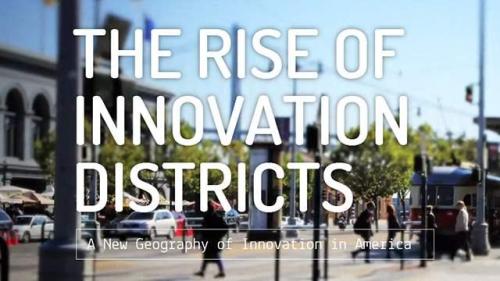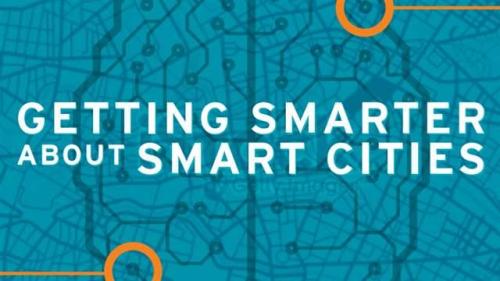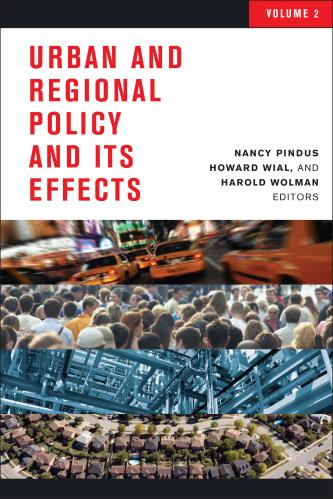Though we’ve long argued that successful innovation districts are the product of local collaboration rather than top-down planning, that doesn’t mean there isn’t a role for the federal government in supporting them. Increased federal investments in things like basic research, STEM skills training, and urban infrastructure are essential for nurturing the growth of innovation districts.
Last week, the President’s Council of Advisors on Science and Technology released its recommendations for advancing innovation within cities. Technology and the Future of Cities, which focuses on “smart city” technology and infrastructure, is a solid example of how the federal government can be supportive of innovation districts without being overly prescriptive.
The report is welcome on several fronts.
First, it recognizes the beneficial dynamics of innovation districts and the utility of focusing on the micro district level rather than on entire cities and metropolitan areas. “[D]istricts create the perfect living laboratory,” the report says. “A district has an area and population that are large enough for new technology implementations to have an impact, but also manageable from the point of view of clarity of intervention, tuning, collection of data, and assessment of progress and lessons learned.”
Second, the report places technological innovation and deployment in a broader context—the rapid rise of cities throughout the world and the markets cities are creating. As the report observes:
Transforming cities around the world in this way is already a race—one that the United States cannot afford to lose. It is generating demand for new products, new companies, and new skilled jobs in the effort to produce the best urban environments.
This is a “new multi-trillion-dollar business opportunity” that has the potential to increase exports and grow jobs in the United States while also helping cities in China, India, Africa, and beyond develop in more sustainable ways.
Finally, the report proposes several concrete initiatives for the federal government to pursue in the final year of the Obama administration.
A few highlights:
Innovation districts are not just where new technologies will be invented; they are also where they will be deployed. From smart infrastructure to energy-efficient technology to automated vehicles, a host of new products are targeted at largely urban challenges. Yet the biggest barriers to deployment at scale aren’t technical—many of these technologies are ready for the market—but rather questions of implementation, policy, and governance. (See Getting Smarter about Smart Cities.) To accelerate adoption of new technologies in cities, the report calls for the creation of an interagency Cities Innovation Technology Investment Initiative (CITII), which would comprise staff from the Departments of Commerce, Housing and Urban Development, Transportation, and Energy. In addition to providing technical support and coordination, CITII could catalyze local innovation: Its competition initiative, similar to the Transportation Department’s Smart Cities challenge, would award $30-40 million to five “first-mover” districts to implement new technologies.
Still, not every city has the capacity to be a first-mover or to develop proprietary solutions. There is a need for replicable models of deployment that can be adapted and tailored for individual districts and cities. Currently, the exchange of lessons mainly occurs through informal or general networks such as the U.S. Conference of Mayors or the National League of Cities. The proposed “City Web,” which could build off the recently announced MetroLab Network, would bring together the Energy Department’s national labs, universities, private-sector researchers, and municipal technology officers to “allow the accumulation and replication of urban solutions in ways that benefit cities with different sizes, different technological knowhow, and different financial capabilities.”
The council also calls for increased formal coordination of federal research related to urban challenges—everything from energy efficiency to sensor technologies to transportation—under the guise of a new Urban Science Technology Initiative (USTI). The council suggests support of not just short-term applied research that benefits cities today but also longer-term basic research that imagines new technologies for cities in the future—the equivalent of the federal role in funding basic research within sectors such as health, energy, or defense.
Technology and the Future of Cities is another illustration of how cities—by pure market and demographic force—are driving demand for policy reforms at the national and global scale. Let’s hope that these strategic moves provide a platform for even more ambitious action in the next administration.
The Brookings Institution is committed to quality, independence, and impact.
We are supported by a diverse array of funders. In line with our values and policies, each Brookings publication represents the sole views of its author(s).











Commentary
A new push for urban solutions for advancing innovation
February 29, 2016